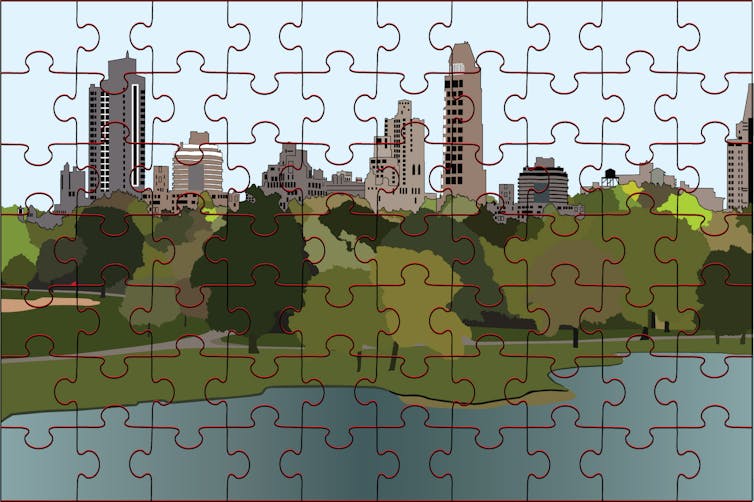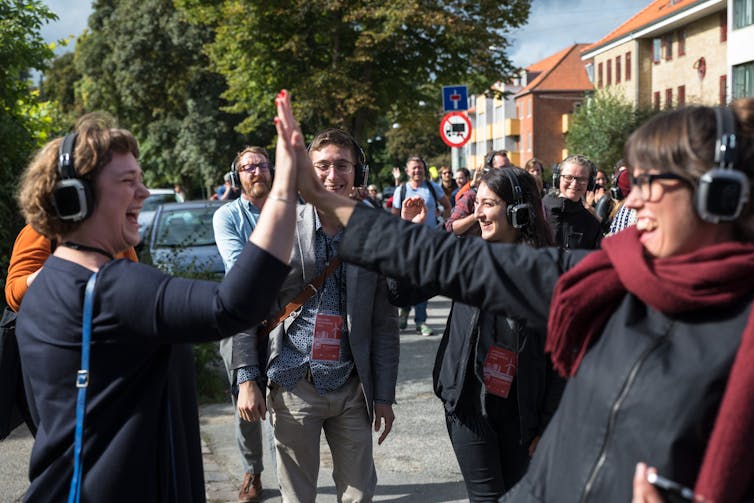The Role of Art in Reimagining the Urban Sphere
From crises in housing and public space, to social unrest due to austerity measures and environmental destruction – in this era of urban upheaval, city leaders often turn to fine art as a way of empowering local communities.
Nonetheless all too often, strategies for urban regeneration seem to focus on improving a place's image, instead of the lives of its residents. And participatory fine art – in which artists collaborate with local communities, leaders, institutions and concern owners – is often more about helping people to accept their daily conditions, rather than to modify them.
Working in this field myself, I take firsthand experience of the problematic roles we, equally artists, are put in, while working in the context of urban development. For one matter, when developers have to consider the participatory and "inclusive" aspects of their developments, they often enlist artists to work with and then-called "marginalised communities". Equally a result, we tin can detect ourselves in uncomfortable positions – for example, I have found myself doing projects with homeless people for housing developments that they volition never be able to live in.
All too often, well-meaning community organisers cast artists as social workers, expecting united states to use art as a way to mediate and intervene in heated social situations, rather than asking difficult questions about the state of affairs itself.
Planners and government officials often write off our projects every bit mere fantasy, which has nothing to do with reality, because our piece of work focuses on tactile and sensuous ways of knowing, every bit opposed to the rational and technical approaches that prevail in urban planning. And while trying to change the planning system from within, we are criticised for beingness used by "the system" when we accept commissions and funding from governmental bodies and planning institutions.
Participatory art is caught in a web of stubborn contradictions, which reduce art to a question of utility: what tin can this do exercise for the urban center? Participatory fine art is expected to provide an answer: a quick-ready DIY solution to urban ills. Rather than trying to change or claiming the current state of affairs, fine art is merely expected to brand the best out of information technology. And as a result, local communities are positioned as the passive recipients of some course of artistic consultancy.
Challenging the given order
But participatory art can do so much more this, to meaningfully empower communities. From experimental performances to collaborative model-making, urban expeditions to co-produced sound walks, treasure hunts to city archiving – participatory fine art can help people articulate their experiences of the city on their ain terms. And this has the power to question and challenge whatever given guild, which directs how people think about cities, and live in them.
Administrators of urban space would like to accept the public believe that the urban environment has a predetermined function: a demote is for sitting, not sleeping, on; a train station is for people on the motility, not for people seeking shelter; a park is for families with children, non for groups of young people – and and then on.

This "given gild" of things risks making residents feel alienated from urban spaces. When the city'southward functions are already decided, there is piffling room for residents to accommodate its spaces according to their own needs. Urban infinite becomes a sort of jigsaw puzzle: the pieces tin can be moved around, just they but fit in one way. At that place is but ane predetermined and rational style to assemble the pieces.
Imagine the possibilities
But in participatory fine art, urban space tin can be reimagined as a mosaic: the pieces fit together in many dissimilar means, and the final outline is non predetermined. Different pieces can relate to each other to produce different forms and make new connections, depending on how you suit them. This way of thinking about the city gives local people the freedom to clear what matters to them, and express their own vision for the city's hereafter.
For example, when participants in Zurich, Switzerland, fabricated an alternative metropolis archive to document their own "unofficial" stories of urban living, they were given the power to decide what data counted as worthy and significant nigh their city.
When people go on audio walks, listening to local residents' stories that imagine their neighbourhood as if it was already inverse for the better, this challenges the view that the city's future tin merely exist produced past planners and designers.

And when participants engage in collaborative model-making, using institute objects to express their dreams and desires for their city, they are given space to imagine alternatives, without existence mired in everyday realities and demands for concrete solutions on "how to get there".
In the present political climate, democracy is seemingly becoming less sensitive to the demands of citizens calling for more than just distribution of resource, a cleaner environment or the defense of common appurtenances. Participatory art has the potential to give metropolis dwellers a sense of agency, empowerment and entitlement, by promising that everyone is capable of imagining how things could be dissimilar. And that'south the first step toward forging a better future.
Source: https://theconversation.com/urban-planning-can-be-elitist-but-art-empowers-people-to-reimagine-their-citys-future-artists-view-111893
0 Response to "The Role of Art in Reimagining the Urban Sphere"
Post a Comment